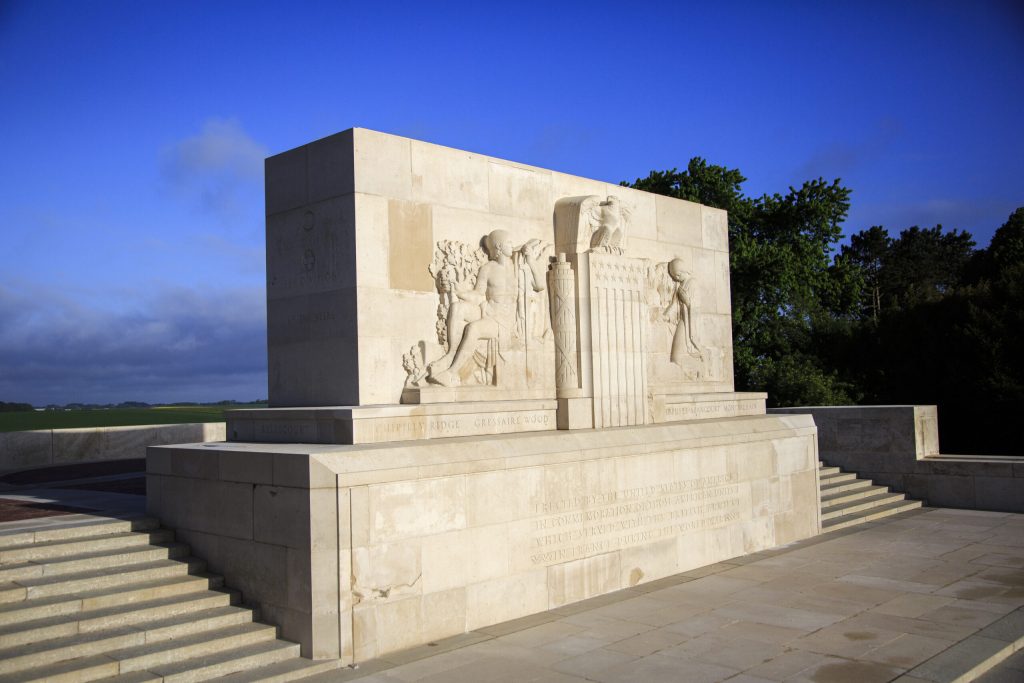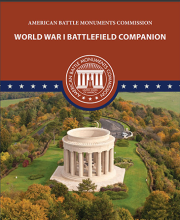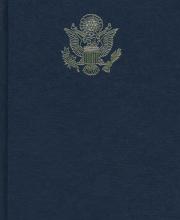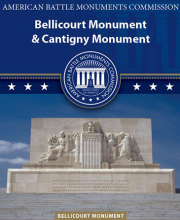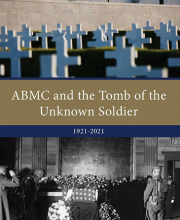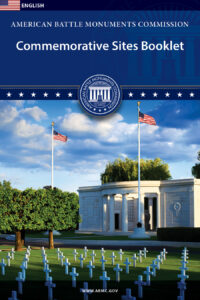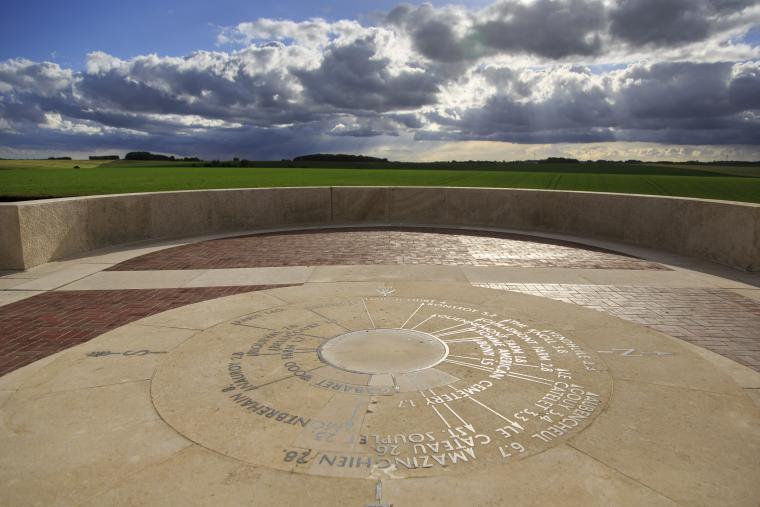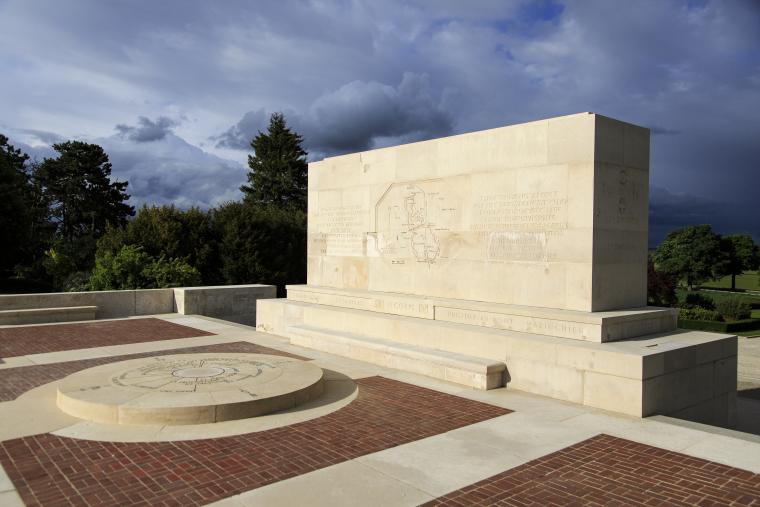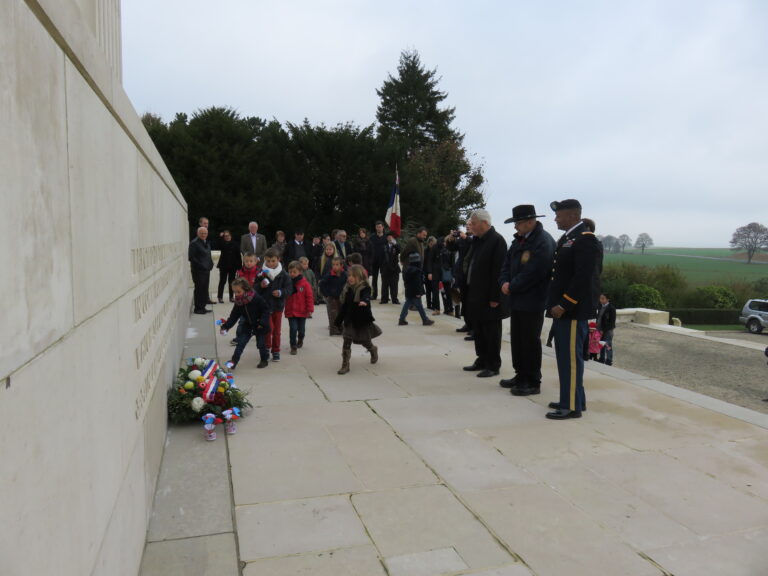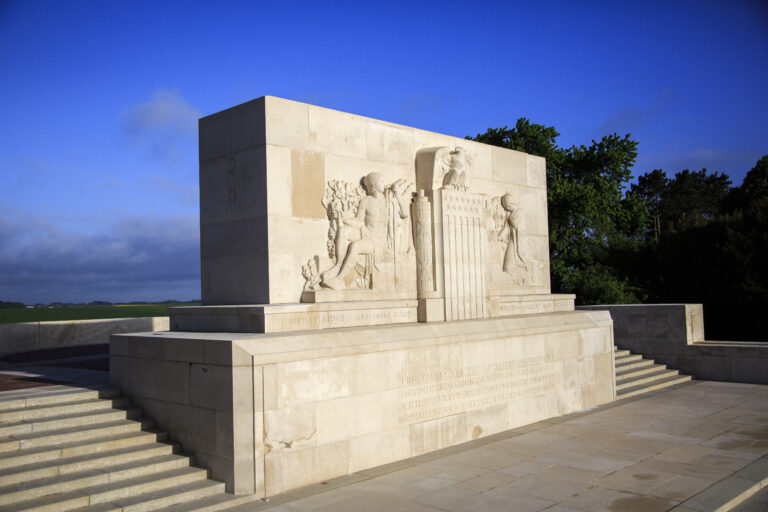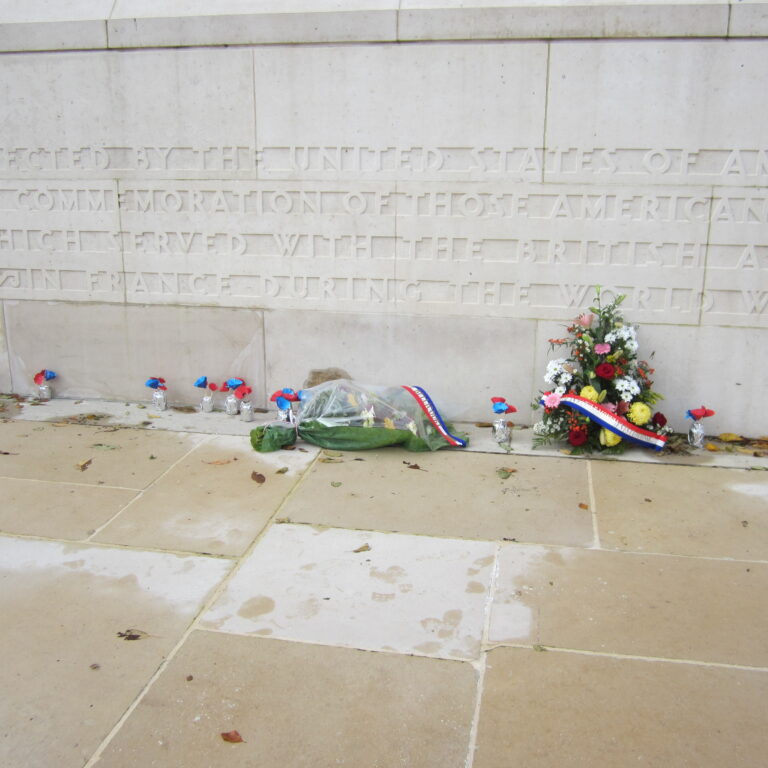The Bellicourt American Monument is nine miles north of St. Quentin (Aisne), France.
Erected above a canal tunnel built by Napoleon I, it commemorates the achievements and sacrifices of the 90,000 American troops who served in battle with the British Armies in France during 1917 and 1918. Engraved on the rear facade of the memorial is a map illustrating the American operations; on the terrace is an orientation table.
The 27th and 30th Divisions came to the vicinity after fighting Belgium earlier in September 1918. The St. Quentin Canal Tunnel passes beneath Bellicourt and Bony. It was part of the Germans’ formidable Hindenburg Line, which was broken by the American troops in a brilliant offensive in September 1918. The Bellicourt Monument lies above the tunnel.
The 30th and 27th Divisions went into the line in adjoining zones of action on September 24 and 25 respectively, under tactical control of the Australian Corps. After actions in succeeding days, they participated in the main Allied offensive beginning on September 29.
Both the 27th and 30th Division engaged in heavy fighting with many casualties. Australian troops passed through the American divisions and continued the offensive. The 27th and 30th divisions were relieved from the vicinities of Bellicourt and the area west of Bony on September 30, 1918. American casualties from fighting in this region are interred at the Somme American Cemetery near Bony, a mile to the northwest.
 An official website of the United States government. Here's how you know.
An official website of the United States government. Here's how you know. 